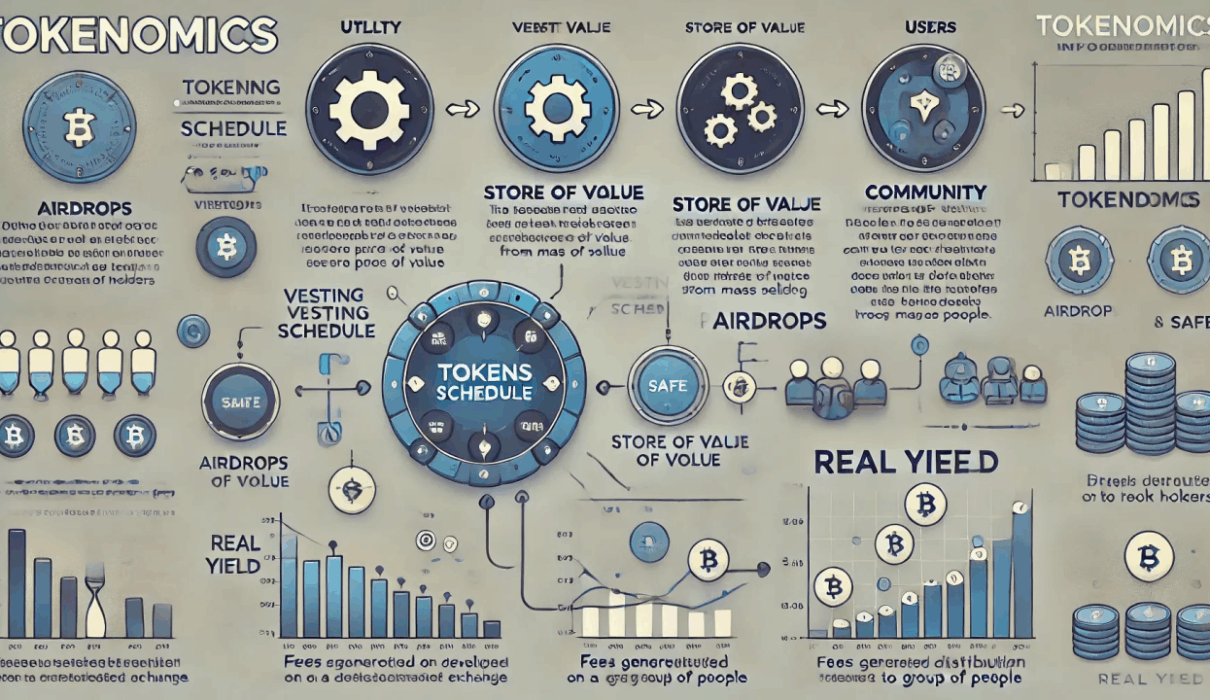When I started deep-diving into the world of crypto, one thing that kept coming up was this intimidating and rather bizarre word: tokenomics. At first, it sounds super technical. But as I’ve been learning, it’s actually the key to everything. Think of it less as a complex theory and more like the set of rules for a game or the blueprint for a city. It’s the economic engine behind a token, defining everything from its supply to its purpose.
But, what exactly is tokenomics? Tokenomics isn’t just jargon – it’s the backbone of how digital currencies function and thrive in today’s market.
In a world full of digital currencies, it’s easy to get lost. So, in this post, I want to break down tokenomics in a way that makes sense to someone totally new to the crypto world. We’ll explore how these virtual assets really work, and why understanding their utility isn’t just for the pros, but for anyone who wants to navigate through this blockchain age.
Ready to learn with me? Let’s get into it.
What are Tokens and How Do They Work?
Before we dive into the world of tokenomics, let’s first understand what tokens are and how they exactly work.
Tokens are digital assets that are issued on a blockchain, which is a decentralized and distributed ledger technology. They can represent a wide range of assets, such as currencies, commodities, or even utilities.
Tokens can be used for various purposes, including as a medium of exchange, a store of value, or as a way to access certain services or platforms.
The value of tokens is determined by supply and demand, which is influenced by factors such as their use cases, the size of their community, and the overall market sentiment (trend).
Tokens can be categorized into different types, including utility tokens, security tokens, and governance tokens, each with its own unique characteristics and functions.
What Does Tokenomics Even Mean?
Tokenomics = Token + Economics
It’s about the financial rules of a crypto token: how it’s made, shared, used, and what makes it valuable.
Why Is Tokenomics Important?
Imagine a game where players can make as many coins as they want. The coins would quickly become worthless, right?
It’s similar in crypto. Bad tokenomics can destroy a token’s value, no matter how good the technology is.
Good tokenomics keeps a token’s economy stable, so that:
- There’s enough available to trade
- People still want it
- People have a reason to keep it
Main Things to Look At in Tokenomics
When you look at a token, here are a few simple things I now pay attention to:
a. Supply
How many tokens currently exist, and how many will there ever be?
- A limited supply (like Bitcoin’s 21 million) can make it valuable, and create FOMO.
- An unlimited (or extremely large) supply needs something to cause a constant rise in token price (usually meme coins like DOGE).
b. Distribution
Who gets the tokens, and how?
- Are most held by a few big owners? (This is a warning sign, because if they sell large quantities, the token value can suddenly crash).
- Are tokens shared fairly between developers, investors, and the public?
c. Utility
What can you actually do with it?
- Pay fees
- Staking
- Access features or services
- Vote on project decisions
(Staking in tokens refers to the process of locking up a certain amount of cryptocurrency in a blockchain network’s wallet to help support the network’s operations.)
d. Incentives
Is there a reason to hold onto it instead of selling it?
- Rewards for staking
- Earning more tokens by participating
- Discounts on services
Incentives such as staking/yield farming rewards or benefits are designed to motivate users, developers, validators, or investors to participate in and support a blockchain ecosystem. This usually helps strengthen the long-term positioning and sustained growth.
More Than Just Numbers
At first, I thought tokenomics was primarily about the number of tokens. But it’s also about how people think – it’s about creating the whole structure to ensure that people want to use the token and believe in its future growth.
A token with good tokenomics and a strong community is more likely to survive in the crypto world than a token that has been randomly created without thoughtfully designed tokenomics.
Key Takeaways
Before I buy any token now, I look at its whitepaper and check the tokenomics section. I’m not an expert, but even as a beginner, I can see some signs of trouble, like:
- A lot of new coins being created
- Unfair sharing
- No good reason for the token to exist
If you’re just starting, don’t skip this step. Tokenomics might sound dull, but it’s really important for a project to succeed in crypto.
Conclusion
Finally, tokenomics is interesting and always changing, and it could change how we think about money and value. If beginners understand the main ideas of tokenomics, they can better understand cryptocurrency and blockchain. They can also make better choices about investing in and using tokens.
Whether you’ve invested before or are just starting, tokenomics is something to learn about. I hope this guide has given you a good introduction to this exciting area. As you continue to learn about tokenomics, remember to stay interested, keep learning, and always be keen to grasp new ideas!
What is a Whitepaper?
A white paper is basically the project’s blueprint — a detailed document that explains:
- What the token or blockchain is about
- Why it exists (the problem it solves)
- How it works (technology, tokenomics, consensus, roadmap)
- Who is behind it (the team or developers)
It’s like a business plan + instruction manual for a crypto project, written to convince investors, developers, and users that the idea is solid and worth supporting.

